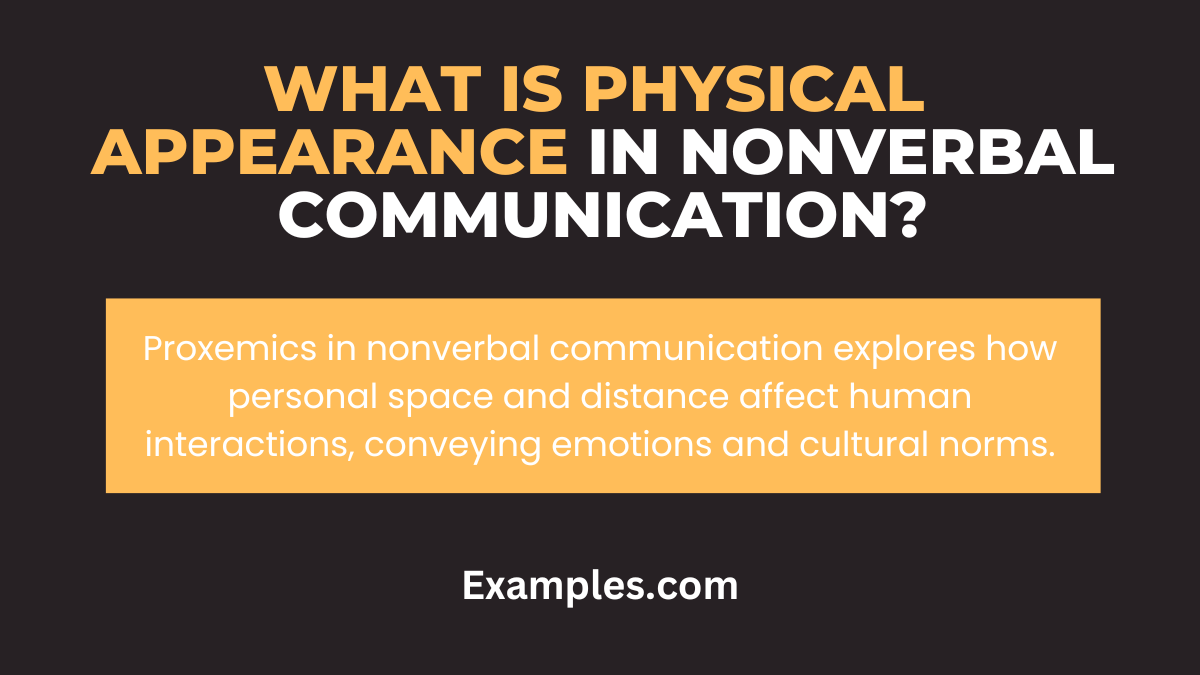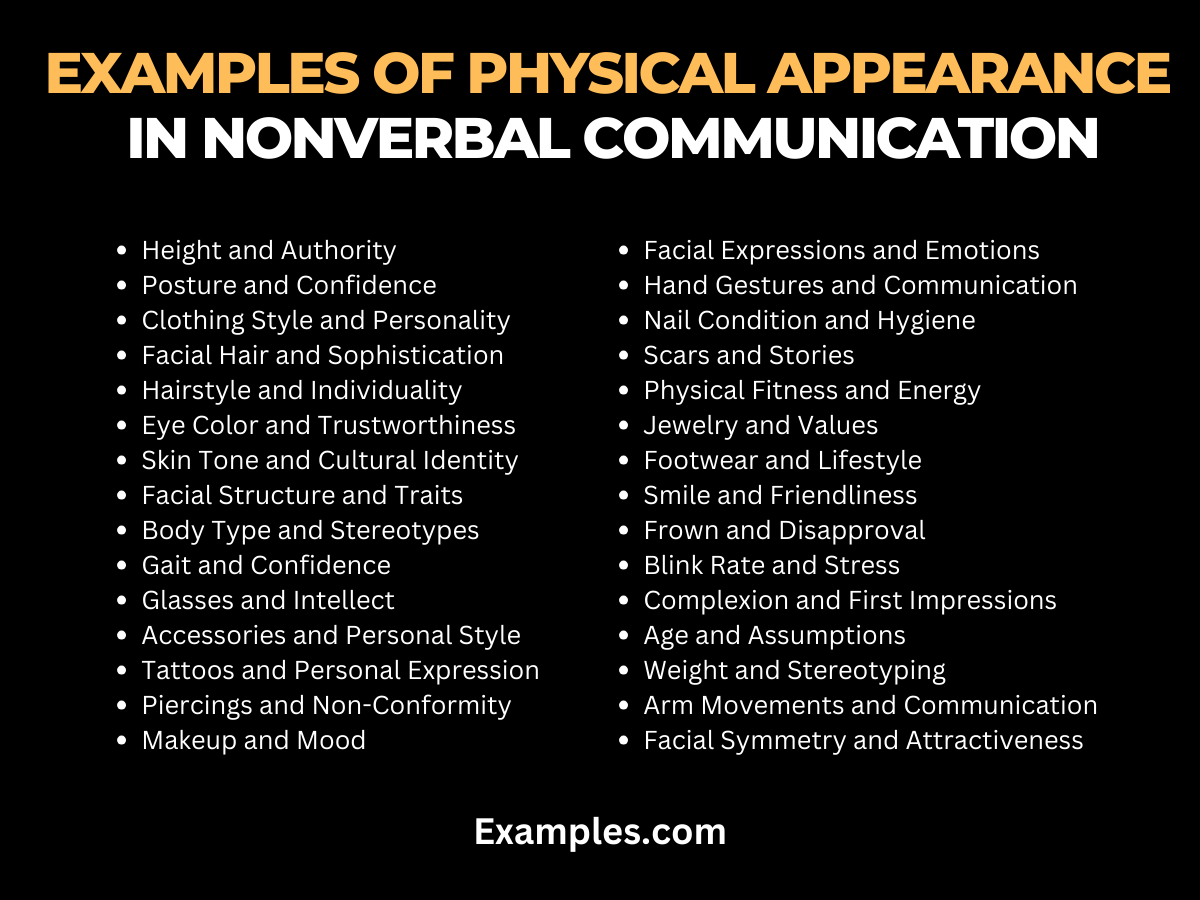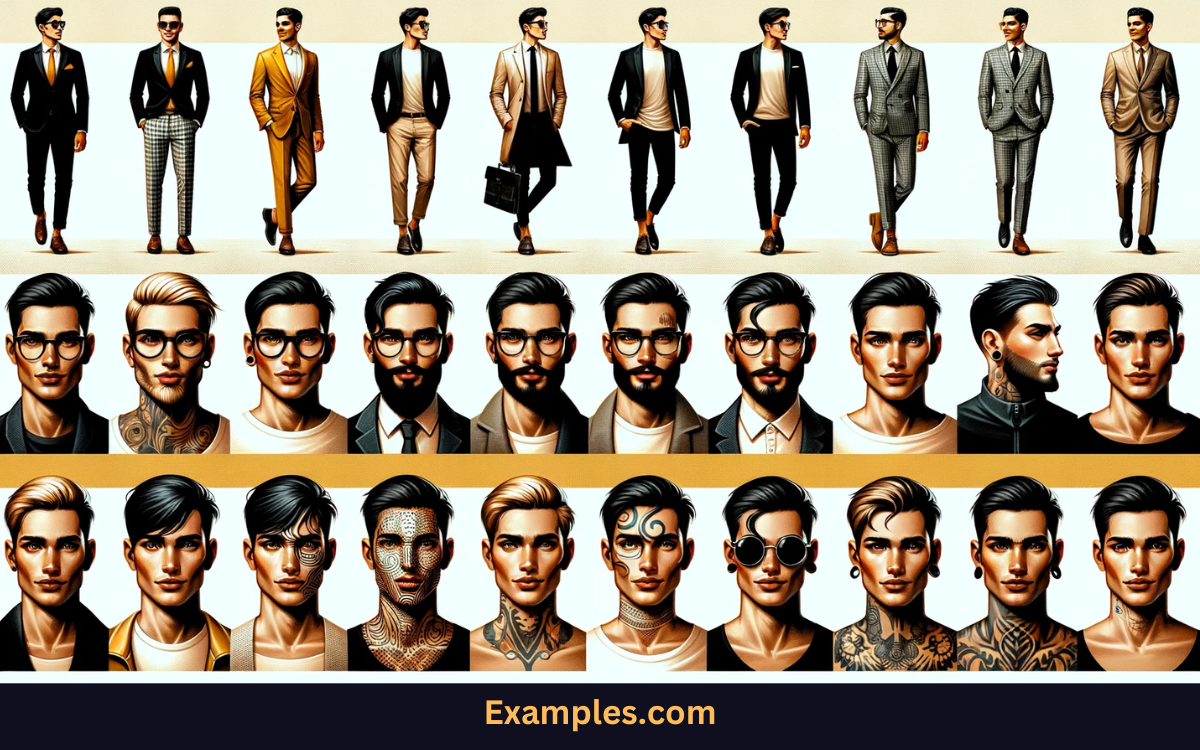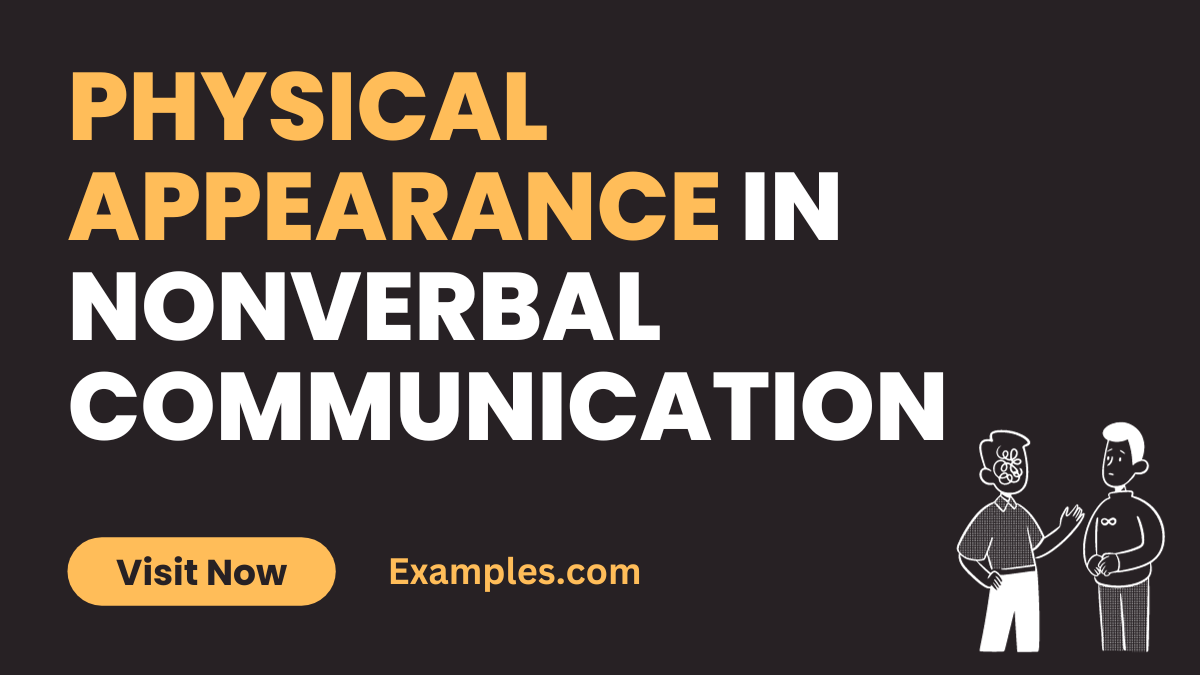29+ Physical Appearance in Nonverbal Communication Examples
Understanding the role of Physical Appearance in Nonverbal Communication is pivotal in decoding the silent yet powerful messages conveyed in our daily interactions. This comprehensive guide delves into various Communication Examples, illustrating how our appearance—clothing, grooming, and overall demeanor—sends subtle yet significant signals in both personal and professional settings. From boardroom meetings to social gatherings, this guide is your key to understanding and mastering this often-overlooked aspect of communication.
What is Physical Appearance in Nonverbal Communication?

Physical Appearance in Nonverbal Communication refers to the visual aspects of our presence that communicate messages to others without the use of words. This includes elements like attire, grooming, body modifications, and overall aesthetics. These visual cues can convey a wide range of information, from socio-economic status and cultural background to emotions and intentions, playing a crucial role in how we are perceived and understood by others.
What is the Best Example of Physical Appearance in Nonverbal Communication?

A prime example of Physical Appearance influencing Nonverbal Communication is seen in professional settings. For instance, a well-tailored suit can convey professionalism, competence, and confidence, often leading to positive first impressions in job interviews or business meetings. Similarly, creative or unconventional attire in artistic fields can express individuality and creativity. These visual cues, whether intentional or subconscious, form an integral part of our nonverbal communication, impacting how we are perceived and interacted with in various social and professional contexts.
30 Examples of Physical Appearance in Nonverbal Communication

Understanding Physical Appearance in Nonverbal Communication is crucial in deciphering silent messages in our daily interactions. This article explores how physical attributes contribute significantly to nonverbal cues, enhancing our comprehension of Nonverbal Communication Examples. Let’s dive into 30 distinct characteristics, each followed by an explanation and an example sentence.

- Height
Height can convey authority or submission.
Example: A taller person standing straight communicates confidence in a meeting. - Posture
Posture reflects confidence and attitude.
Example: Leaning forward shows interest during a conversation. - Clothing Style
Clothing can indicate personality or social status.
Example: A sharply dressed individual often makes a strong first impression. - Facial Hair
Facial hair can suggest maturity or style preferences.
Example: A well-groomed beard often conveys a sense of sophistication. - Hairstyle
Hairstyles can reflect cultural identity or personal taste.
Example: A unique hairstyle can express individuality in a social setting. - Eye Color
Eye color can sometimes influence perceptions of trustworthiness.
Example: Deep blue eyes are often perceived as calming. - Skin Tone
Skin tone can reflect ethnic background, affecting interpersonal dynamics.
Example: Diverse skin tones in a group can symbolize cultural inclusivity. - Facial Structure
Certain facial structures are often associated with specific traits.
Example: A strong jawline might convey determination. - Body Type
Different body types can evoke various stereotypes or biases.
Example: A fit physique is often associated with health and vigor. - Gait
How one walks can express confidence or shyness.
Example: A brisk walk typically shows purpose and confidence. - Glasses
Glasses can indicate intellect or fashion sense.
Example: Stylish frames can make a statement of sophistication. - Accessories
Accessories reflect personal style and attention to detail.
Example: An elegant watch can signify a sense of refinement. - Tattoos
Tattoos can express personal stories or beliefs.
Example: Visible tattoos often represent a bold personality. - Piercings
Piercings can suggest a non-conformist attitude.
Example: Multiple ear piercings can convey artistic individuality. - Makeup
The style of makeup can communicate various moods or occasions.
Example: Bright makeup can symbolize a cheerful disposition. - Facial Expressions
Subtle facial changes can convey a range of emotions.
Example: A furrowed brow might indicate confusion or concentration. - Hand Gestures
Hand movements can accentuate points or emotions.
Example: Open palms can signify honesty or openness. - Nail Condition
The state of one’s nails can reflect hygiene or professionalism.
Example: Well-manicured nails suggest meticulousness. - Scars
Scars can indicate past experiences or resilience.
Example: Visible scars often symbolize a story of survival or bravery. - Physical Fitness
Level of fitness can impact perceptions of energy or strength.
Example: A toned body often reflects a dedication to health. - Jewelry
Choice of jewelry can reflect social status or personal values.
Example: Minimalist jewelry might suggest elegance and simplicity. - Footwear
Types of shoes worn can indicate lifestyle or priorities.
Example: High heels often signify formality or fashion consciousness. - Smile
A smile can convey friendliness, warmth, or comfort.
Example: A genuine smile often breaks barriers in social interactions. - Frown
Frowning can express disagreement or disapproval.
Example: A slight frown can signal confusion or disagreement. - Blink Rate
Frequent blinking might indicate stress or discomfort.
Example: Rapid blinking could signal someone is feeling pressured. - Complexion
Skin complexion can affect first impressions and biases.
Example: A clear complexion is often associated with health. - Age
Apparent age can influence assumptions about experience or wisdom.
Example: Youthful appearance may sometimes be equated with inexperience. - Weight
Body weight can lead to stereotyping or bias.
Example: A lean figure is often linked to athleticism. - Arm Movements
Arm movements can emphasize points or indicate nervousness.
Example: Crossed arms might signify defensiveness or discomfort. - Facial Symmetry
Symmetry is often associated with attractiveness or health.
Example: High facial symmetry is commonly perceived as aesthetically pleasing.
How Physical Appearance in Nonverbal Communication is Important?
Physical appearance plays a significant role in nonverbal communication. It is often the first aspect of a person that others notice and can set the tone for future interactions. Physical appearance includes elements such as clothing, grooming, body shape, and overall aesthetics. These aspects can convey a wide range of messages and influence perceptions in various ways:
- First Impressions: Physical appearance is crucial in making first impressions. People often form opinions about others based on their appearance before any verbal communication occurs.
- Cultural Significance: Different cultures have varied norms and expectations regarding physical appearance, which can communicate respect, professionalism, or social status.
- Contextual Relevance: In certain contexts, such as professional settings, appearance can convey competence, credibility, and seriousness.
- Personal Identity: Individuals often use their appearance to express personality, values, and preferences, which can be an essential part of nonverbal self-expression.
- Influencing Emotions and Attitudes: Physical appearance can affect the emotions and attitudes of both the observer and the individual, influencing confidence, approachability, and openness in communication.
Can Physical Appearance Play a Larger Role in Nonverbal Communication?
Yes, physical appearance can play a larger role in nonverbal communication. In some scenarios, it might even overshadow verbal communication. Here are several points highlighting this:
- Nonverbal Cues: Physical appearance itself can be a rich source of nonverbal cues. For instance, attire can indicate professionalism or casualness, while grooming can reflect attention to detail.
- Influencing Perceptions: People often make snap judgments based on appearance, which can influence their willingness to engage, trust, and respect an individual.
- Adapting to Situations: By altering physical appearance, individuals can nonverbally adapt to different situations, such as dressing formally for a business meeting or casually for a social gathering.
- Social and Professional Contexts: In professional contexts, physical appearance can significantly impact perceptions of expertise and authority. Similarly, in social situations, it can affect likability and approachability.
- Conveying Nonverbal Messages: Certain aspects of appearance, like uniforms or specific styles, can convey authority, belonging to a group, or adherence to certain values or norms.
In conclusion, the role of physical appearance in nonverbal communication is undeniable and multifaceted. It serves as a primary medium through which individuals express themselves, influencing both their self-perception and the perceptions others have of them. The importance of personal appearance goes beyond mere aesthetics; it is deeply intertwined with social identity, professional image, and personal branding. As we navigate through various social and professional settings, our appearance cues often communicate messages that words cannot, establishing our desired social realities and identities. This silent yet powerful aspect of nonverbal communication deserves careful consideration and strategic management.
Moreover, physical appearance plays a critical role in professional success. It is often the first impression others receive and significantly affects workplace performance and interpersonal relationships. A polished and professional appearance not only elevates others’ perceptions of an individual but also enhances self-confidence and pride in one’s image. In professional settings, appearance can make or break initial judgments and influence career opportunities. Understanding and managing one’s physical appearance, therefore, is not just about aesthetics but about effectively communicating competence, credibility, and professionalism.
For further insights on the impact of physical appearance in professional settings, the following resources offer valuable information and perspectives:
- The Career Cook Book, which discusses the value of physical appearance in the context of career success and personal branding.
- Ifioque.com, providing a deeper exploration of personal appearance and its significance in nonverbal communication across different contexts.



